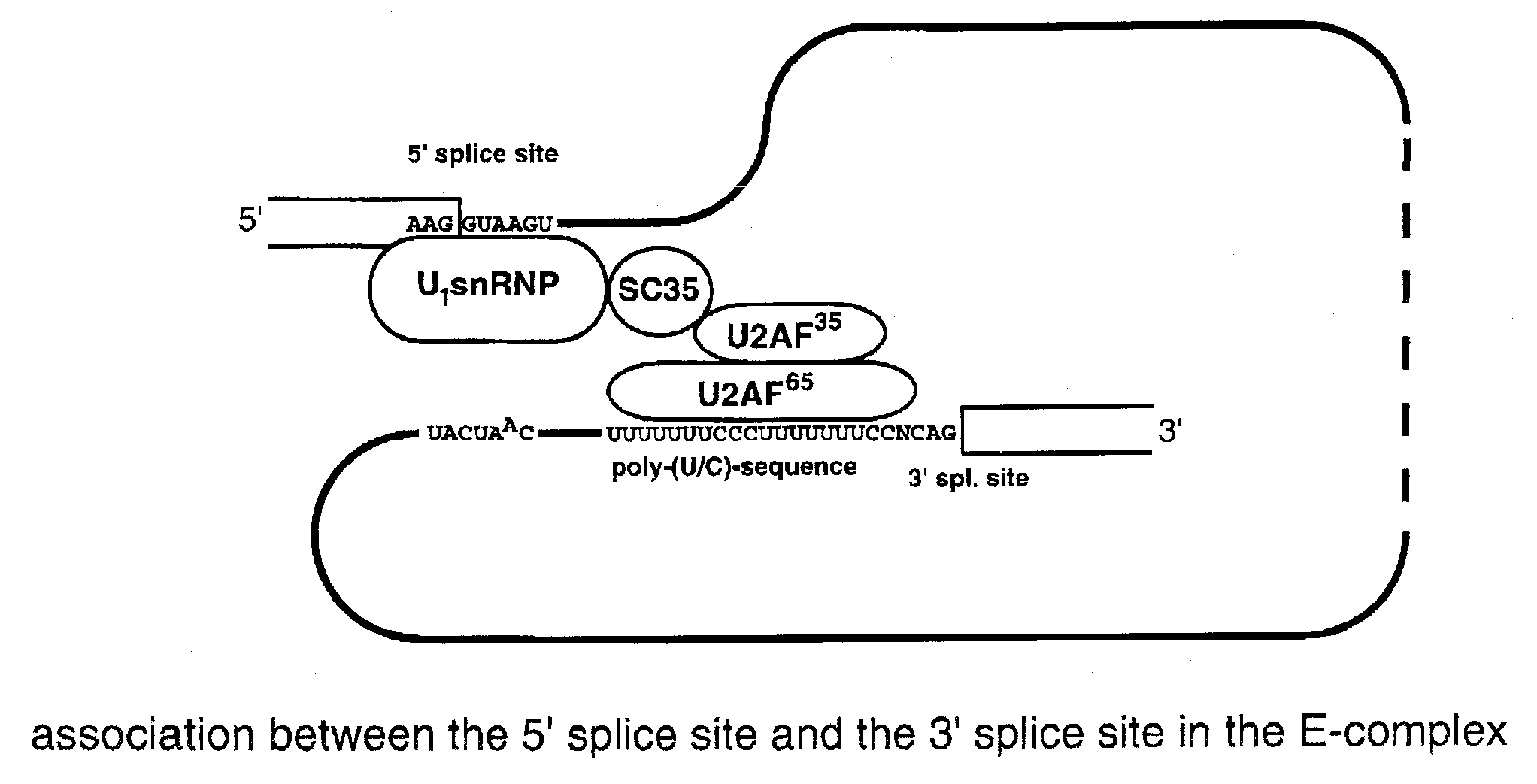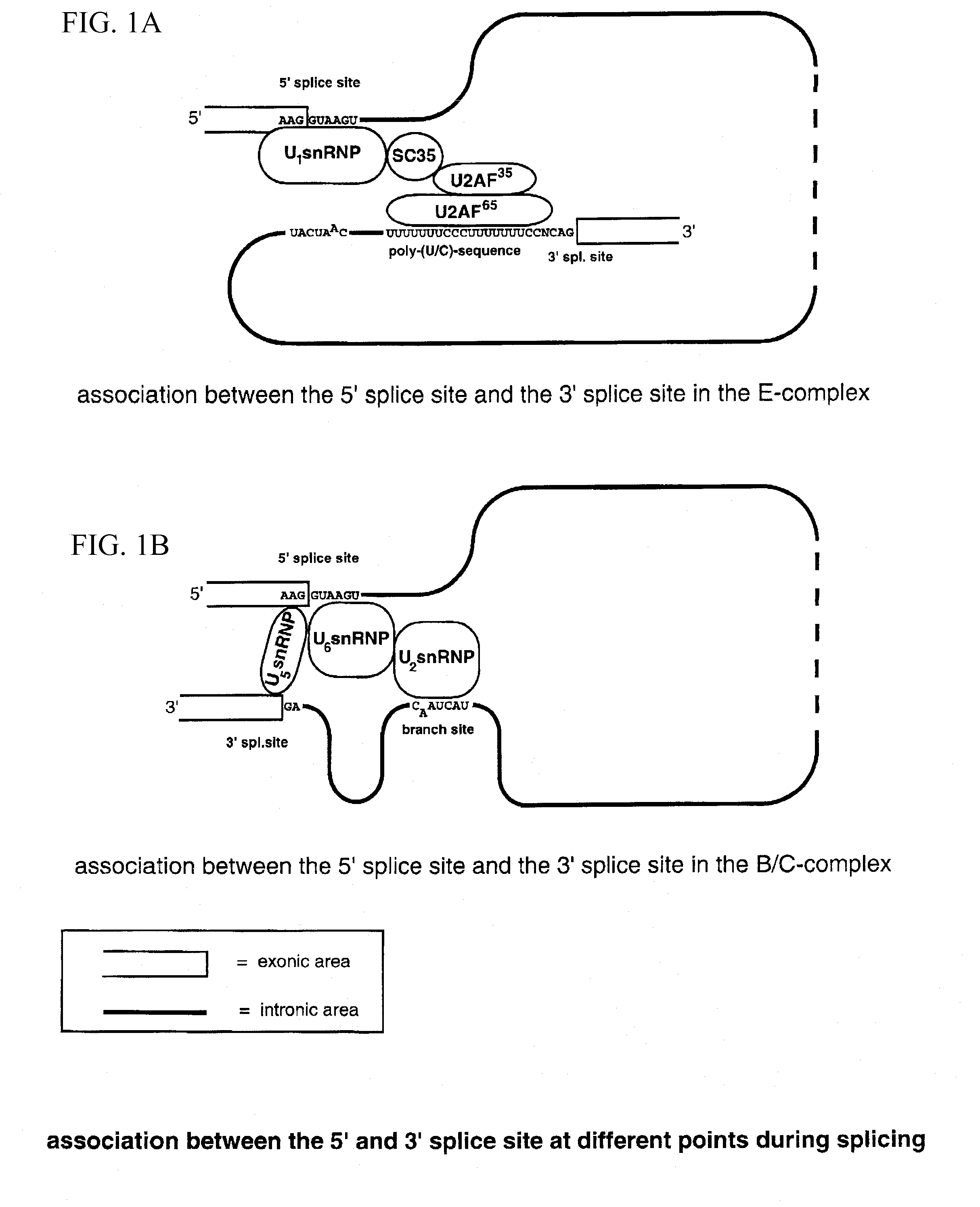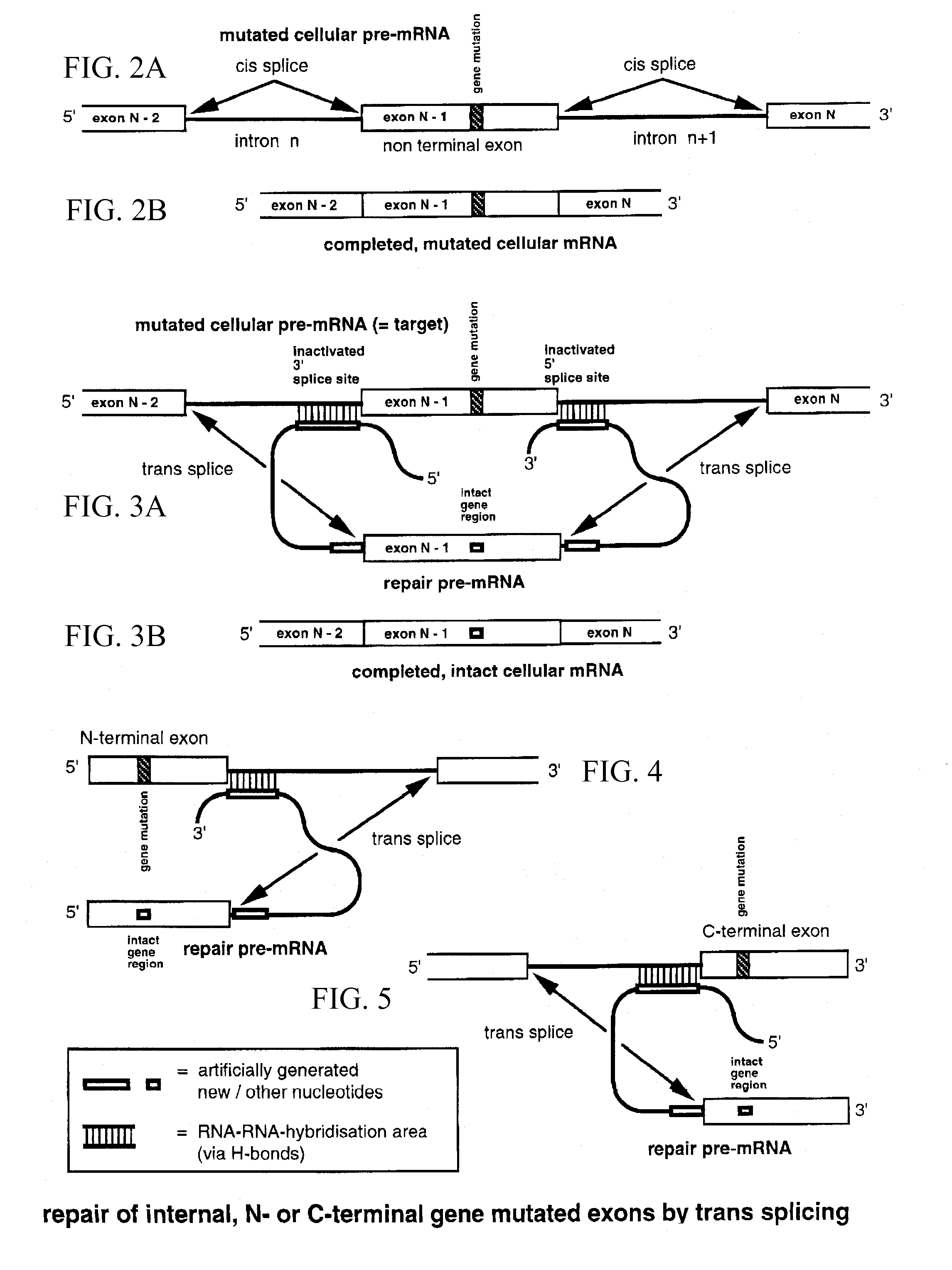Method for the repair of mutated RNA from genetically defective DNA and for the specific destruction of tumor cells by RNA trans-splicing, and a method for the detection of naturally trans-spliced cellular RNA
a technology of dna and rna, applied in the field of methods, can solve the problems of inability to repair microsurgically the defect of the gene on and achieve the effect of not being able to achieve the immediate dna level of repair
- Summary
- Abstract
- Description
- Claims
- Application Information
AI Technical Summary
Benefits of technology
Problems solved by technology
Method used
Image
Examples
example
[0203]Trans-splicing between an artificially created, incomplete RNA, which encodes the HSV-TK protein, and an alpha-fetoprotein RNA (AFP-RNA) from tumor cells for the selective destruction of these tumor cells:
[0204]Initially, the RNA encoding the HSV-TK protein is generated in the cells by incorporating an appropriate DNA in all cells (tumor cells and normal cells), which transcribes said RNA. To achieve strong transcription, this DNA likewise includes a strong promoter with appropriate enhancer regions, e.g. from SV40 (see FIG. 11A). To generate a pre-mRNA stable at the 3′ end thereof, this DNA also includes a strong polyadenylation recognition site (e.g. likewise from SV40) with an AATAAA region upstream and a poly-GT region downstream of the polyadenylation cleavage site (see FIG. 11A).
[0205]In its essential far portion this DNA also includes the complete DNA sequence encoding the cell death protein from amino acid 2 on. Said DNA sequence is obtained via a cDNA sequence derived...
PUM
 Login to View More
Login to View More Abstract
Description
Claims
Application Information
 Login to View More
Login to View More - R&D
- Intellectual Property
- Life Sciences
- Materials
- Tech Scout
- Unparalleled Data Quality
- Higher Quality Content
- 60% Fewer Hallucinations
Browse by: Latest US Patents, China's latest patents, Technical Efficacy Thesaurus, Application Domain, Technology Topic, Popular Technical Reports.
© 2025 PatSnap. All rights reserved.Legal|Privacy policy|Modern Slavery Act Transparency Statement|Sitemap|About US| Contact US: help@patsnap.com



